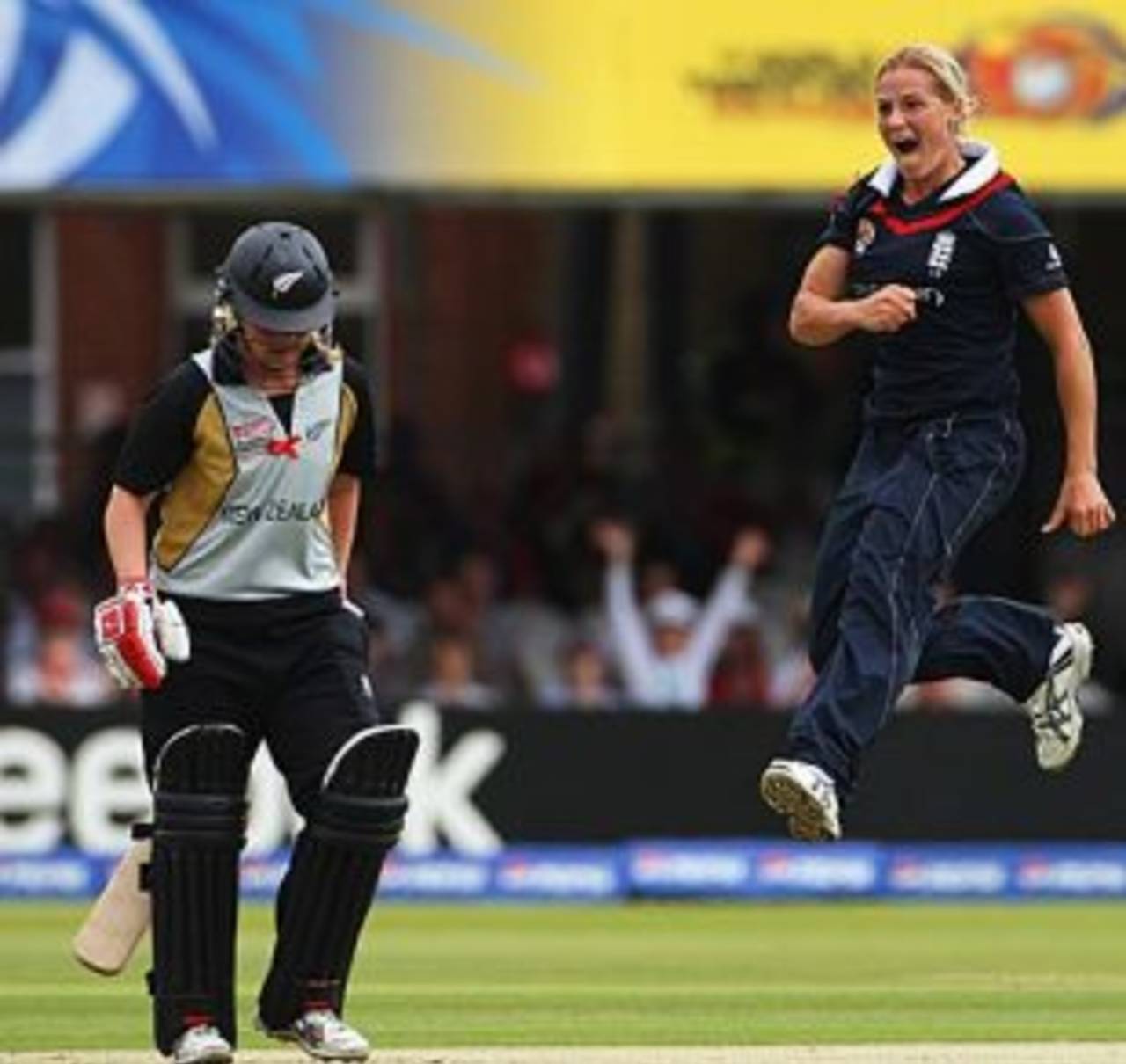T20 cricket is the way for women's cricket to grow and remain commercially viable,
Clare Connor, the chairwoman of the ICC's women's cricket committee, has said. She said playing T20 tournaments simultaneously with the men, as with the World Twenty20, gives women's cricket an ideal platform to attract greater viewership.
There hasn't been a
women's Test played since early 2011, and fitting in all three formats, Connor said, would be difficult until women's cricket became fully professional - which, she believes, it is not ready for yet.
"The reality is that since the T20 format came into being in international cricket in 2004, there has barely been any Test cricket," Connor told ESPNcricinfo in
an interview. "That's because the T20 format gives us that platform. It's a shorter format, it's more likely to grow the game from a participation perspective and also from a commercial perspective. It gives us probably more opportunity to get on television, and I think that is the way the women's game is headed. That's the reality and we have got to embrace that, and we are, with more and more double headers."
Men's and women's World T20s have been played simultaneously since 2009, the first time a women's event was held on a global scale in the format. Connor said the decline of Tests in women's cricket "polarises opinion" but T20 offers them the best chance to increase visibility.
"The reality is: if we don't play Test cricket, if Australia and New Zealand, for instance, are no longer going to play Test cricket, in the period of time needed to play a Test match, they could play three T20 games. They can get them on television and they can play alongside the men, and that's a huge opportunity."
England and Australia introduced
player contracts for women cricketers in 2008, offering some flexibility to players who still juggle playing cricket at the highest level with alternative careers. Pakistan and West Indies have also brought in a contract system, but Connor felt it was too soon to make contracts mandatory for all countries.
"So long as there is a really healthy bilateral FTP in place and so long as the ICC sees that the performance standards in the women's game are going up, I don't think it's up to the ICC necessarily to legislate on whether the women's players should be fully contracted or fully professional. In an ideal world, yes, we would see that, but I don't think we are probably ready for it yet, and I don't think there are enough countries ready to fully professionalise the women's game for there to be enough women's cricket to be played that is commercially viable, if you like."
Last year, the WICB
increased the number of contracted women cricketers to eight. "There is the evidence there to show that some form of contracts is really useful and can be beneficial," Connor said. "One of the best cases of how that's helped improve standards has been the West Indies, who in the last four years have really shot up the rankings and are a force to be reckoned with."
One of the aspirations of the ICC women's cricket committee, Connor said, was to get all ODI members to include women's cricket in their broadcast rights negotiations. The committee, for its part, has been trying to promote more bilateral cricket in the women's game and reduce over-dependence on ICC events for the women's game. In the last six months, Connor said, there has been an attempt to "increase the number of the minimum standard regulations, the number of games - bilateral cricket - that must be played in the ODI and T20 format".
"That's something we've been constantly looking to address - really encourage as much bilateral cricket as possible, so that players have the opportunity to play in all different sorts of environments and all different sorts of opposition."
